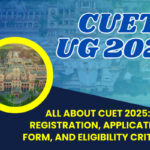HISTORY-314: Syllabus for Class 12
Unit I: The Story of the First Cities – Harappan Archaeology
- Broad Overview: Early urban centres.
- Story of Discovery: Harappan civilization.
- Excerpt: Archaeological report on a major site.
- Discussion: How it has been utilized by archaeologists/historians.
Unit II: Political and Economic History: How Inscriptions Tell a Story
- Broad Overview: Political and economic history from the Mauryan to the Gupta period.
- Story of Discovery: Inscriptions and the decipherment of the script.
- Excerpt: Asokan inscription and Gupta period land grant.
- Discussion: Interpretation of inscriptions by historians.
Unit III: Social Histories Using the Mahabharata
- Broad Overview: Issues in social history, including caste, class, kinship, and gender.
- Story of Discovery: Transmission and publication of the Mahabharata.
- Excerpt: From the Mahabharata, illustrating how it has been used by historians.
Unit IV: A History of Buddhism: Sanchi Stupa
- Broad Overview:
- A brief review of religious histories of Vedic religion, Jainism, Vaishnavism, and Shaivism.
- Focus on Buddhism.
- Story of Discovery: Sanchi stupa.
- Excerpt: Reproduction of sculptures from Sanchi.
- Discussion: Ways in which sculpture has been interpreted by historians, and other sources for reconstructing the history of Buddhism.
Unit V: Medieval Society Through Travellers’ Accounts
- Broad Overview: Outline of social and cultural life as they appear in travellers’ accounts.
- Story of Their Writings: A discussion of where they travelled, why they travelled, what they wrote, and for whom they wrote.
- Excerpts: From Alberuni, Ibn Batuta, Bernier.
- Discussion: What these travel accounts can tell us and how they have been interpreted by historians.
Unit VI: Religious Histories: The Bhakti-Sufi Tradition
- Broad Overview:
- Outline of religious developments during this period.
- Ideas and practices of the Bhakti-Sufi saints.
- Story of Transmission: How Bhakti-Sufi compositions have been preserved.
- Excerpt: Extracts from selected Bhakti-Sufi works.
- Discussion: Ways in which these have been interpreted by historians.
Unit VII: New Architecture: Hampi
- Broad Overview:
- Outline of new buildings during the Vijayanagar period — temples, forts, irrigation facilities.
- Relationship between architecture and the political system.
- Story of Discovery: Account of how Hampi was found.
- Excerpt: Visuals of buildings at Hampi.
- Discussion: Ways in which historians have analyzed and interpreted these structures.
Unit VIII: Agrarian Relations: The Ain-i-Akbari
- Broad Overview:
- Structure of agrarian relations in the 16th and 17th centuries.
- Patterns of change over the period.
- Story of Discovery: Account of the compilation and translation of Ain-i-Akbari.
- Excerpt: From the Ain-i-Akbari.
- Discussion: Ways in which historians have used the text to reconstruct history.
Unit IX: The Mughal Court: Reconstructing Histories Through Chronicles
- Broad Overview:
- Outline of political history (c. 15th-17th centuries).
- Discussion of the Mughal court and politics.
- Story of Discovery: Account of the production of court chronicles, and their subsequent translation and transmission.
- Excerpts: From the Akbarnama and Padshahnama.
- Discussion: Ways in which historians have used the texts to reconstruct political histories.
Unit X: Colonialism and Rural Society: Evidence from Official Reports
- Broad Overview:
- Life of zamindars, peasants, and artisans in the late 18th century.
- East India Company, revenue settlements, and surveys.
- Changes over the nineteenth century.
- Story of Official Records: An account of why official investigations into rural societies were undertaken and the types of records and reports produced.
- Excerpts: From Firminger’s Fifth Report, Accounts of Francis Buchanan-Hamilton, and Deccan Riots Report.
- Discussion: What the official records tell and do not tell, and how they have been used by historians.
Unit XI: Representations of 1857
- Broad Overview:
- The events of 1857-58.
- How these events were recorded and narrated.
- Focus: Lucknow.
- Excerpts: Pictures of 1857, Extracts from contemporary accounts.
- Discussion: How the pictures of 1857 shaped British opinion of what had happened.
Unit XII: Colonialism and Indian Towns: Town Plans and Municipal Reports
- Broad Overview: The growth of Mumbai, Chennai, hill stations, and cantonments in the 18th and 19th centuries.
- Excerpts: Photographs and paintings. Plans of cities. Extracts from town plan reports. Focus on Kolkata town planning.
- Discussion: How the above sources can be used to reconstruct the history of towns and what these sources do not reveal.
Unit XIII: Mahatma Gandhi Through Contemporary Eyes
- Broad Overview:
- The nationalist movement (1918-48).
- The nature of Gandhian politics and leadership.
- Focus: Mahatma Gandhi in 1931.
- Excerpts: Reports from English and Indian language newspapers and other contemporary writings.
- Discussion: How newspapers can be a source of history.
Unit XIV: Partition Through Oral Sources
- Broad Overview:
- The history of the 1940s.
- Nationalism, Communalism, and Partition.
- Focus: Punjab and Bengal.
- Excerpts: Oral testimonies of those who experienced partition.
- Discussion: Ways in which these have been analyzed to reconstruct the history of the event.
Unit XV: The Making of the Constitution
- Broad Overview:
- Independence and the new nation-state.
- The making of the Constitution.
- Focus: The Constitutional Assembly debates.
- Excerpts: From the debates.
- Discussion: What these debates reveal and how they can be analyzed.
Note:
- The History Question Paper will have 50 questions, out of which 40 questions need to be attempted.
Looking to excel in History for CUET UG 2025 and gain admission to prestigious universities like Delhi University (DU), BHU, JNU, and more? At Himalaya EduHub, we provide the most comprehensive and effective History coaching in Jaipur. Our CUET UG 2025 History course is tailored to cover the entire syllabus and equip you with all the necessary skills for success.
History (314) Syllabus for CUET UG 2025
The History (314) syllabus is designed to test your knowledge and understanding of Indian and World history. It includes a broad range of topics related to ancient, medieval, and modern history, focusing on the significant events and themes that have shaped the world and India.
Part A: Themes in Indian History – I (From Earliest Times to the 8th Century CE)
- Early Societies and Early States
- Introduction to early human societies, agricultural revolution, and the rise of early civilizations.
- Early state formations, including the Mauryan and Gupta empires.
- Urbanization, art, architecture, and cultural developments of the period.
- The Vedic Age
- Social, political, and economic life in the Vedic period.
- Important Vedic texts, their meanings, and the significance of rituals and practices.
- The Rise of Magadha and Mauryan Empire
- The rise and spread of Magadha and its expansion under Mauryan kings like Chandragupta Maurya and Ashoka.
- The significance of Ashoka’s rule and his contribution to the spread of Buddhism.
- The Gupta Period
- The Gupta Empire and its achievements in administration, science, literature, and art.
- Key rulers like Chandragupta I, Samudragupta, and Chandragupta II.
- Decline of the Gupta Empire and the impact of regional kingdoms.
Part B: Themes in Indian History – II (8th Century to the 18th Century)
- Early Medieval India
- The establishment of regional kingdoms after the fall of the Gupta Empire.
- The spread of Islam in India and the establishment of Sultanates.
- The importance of Delhi Sultanate rulers and their impact on society and culture.
- Bhakti and Sufi Movements
- Rise of Bhakti and Sufi movements and their impact on religious and cultural life in medieval India.
- Important saints and philosophers like Ramanuja, Kabir, and Guru Nanak.
- The Mughal Empire
- Establishment and expansion of the Mughal Empire under Akbar and his successors.
- Political, economic, and cultural aspects of Mughal rule.
- The decline of the Mughal Empire and the causes behind it.
- The Rise of Regional States
- Regional states and their role in the socio-political landscape of medieval India.
- Important rulers like Shivaji and their contribution to Indian history.
Part C: Themes in Indian History – III (19th Century to the Present)
- Colonialism and Indian Society
- The impact of British colonial rule on Indian society, economy, and culture.
- Key economic policies, including the introduction of railways, land revenue systems, and trade policies.
- Freedom Struggles and Nationalism
- The growth of nationalist movements in India, from the Revolt of 1857 to the Indian National Congress and Mahatma Gandhi’s leadership.
- Key events such as the Quit India Movement, Non-Cooperation Movement, and the role of revolutionary movements.
- Partition and Independence
- The causes and consequences of the partition of India and the independence struggle.
- The impact of partition on Indian society, migration, and communal violence.
- Post-Independence India
- The consolidation of India post-independence, integration of princely states, and the role of the Indian Constitution.
- The challenges faced by India after independence, including economic and social reforms, and the development of democratic institutions.
Why Choose Himalaya EduHub for History (314) Coaching?
- Expert Faculty: Our experienced faculty provides in-depth explanations of all history topics to help you grasp complex concepts.
- Comprehensive Syllabus Coverage: We offer detailed lessons on the entire History syllabus, ensuring you are fully prepared for the CUET UG 2025 exam.
- Mock Tests and Practice Papers: Take advantage of mock tests and practice questions that mimic the CUET exam format.
- Personalized Attention: Our faculty offers personalized guidance and feedback to help you improve in specific areas.
- Crash and Foundation Courses: Choose between our Crash Course for quick revision or Foundation Course for an in-depth understanding of history.
- Flexible Learning: We offer both online and offline coaching options to suit your learning preferences.
Join Himalaya EduHub Today and Start Your History Preparation!
For more details, visit our CUET UG 2025 Course Information page and secure your spot in our History coaching classes.


